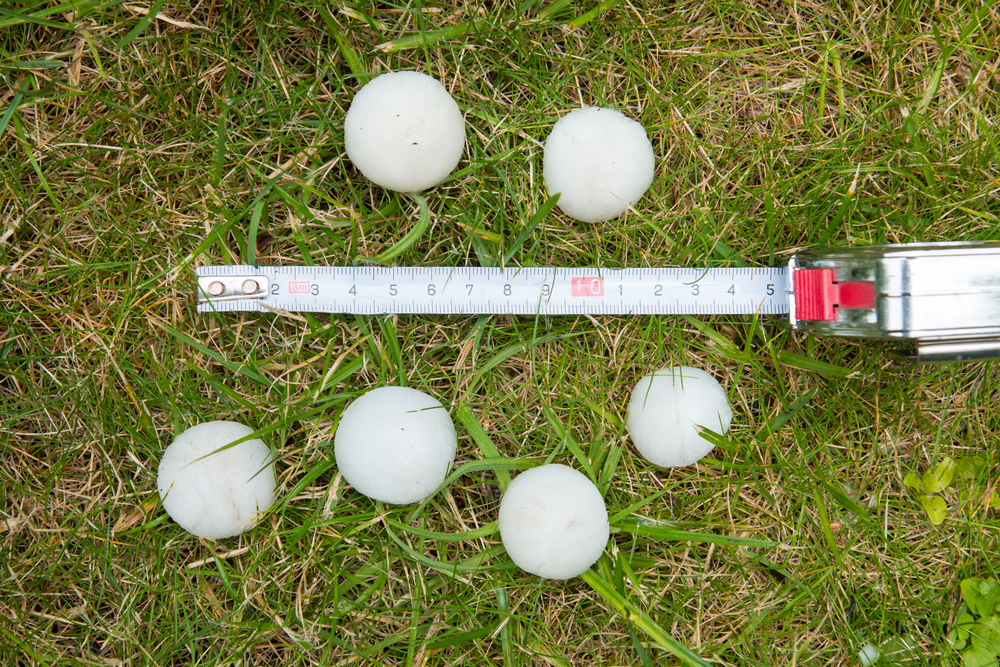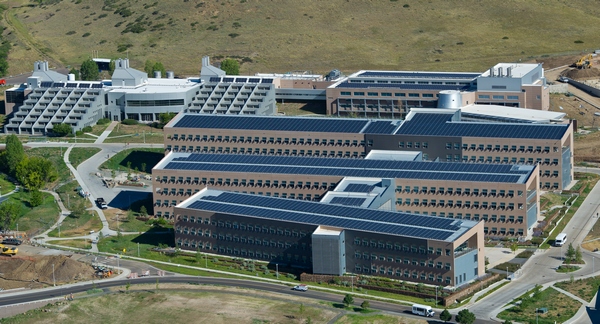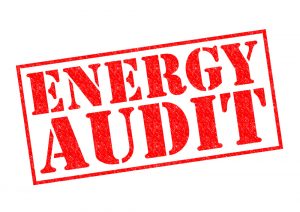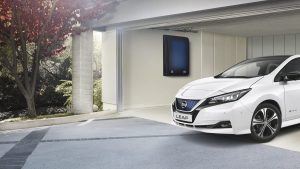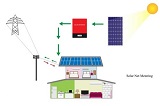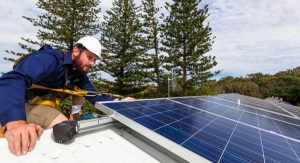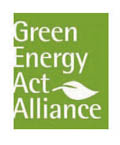One of the many common questions that homeowners have is regarding the durability of solar panels. Because they are installed on the roof of a home or business or a ground-mounted rack in an equally exposed area, they can fall victim to a tremendous range of adverse weather conditions and other damaging elements. One of the most hazardous weather phenomena is a hail storm.
Unlike freezing rain, ice pellets and snow which happen in the winter, hail is generally a warm-season phenomenon that takes place in the presence of cumulonimbus clouds during a thunderstorm. A strong updraft pushes water droplets into the colder upper atmosphere where it freezes and then falls as balls of ice, often smaller than the size of a pea, sometimes up to the size of a golfball, and occasionally larger. Hail will dent cars, break windows and damage shingles and siding, and since solar panels are glass, it makes sense to assume that they might be shattered by large hail.
In reality, though, hail damage is remarkably rare, due to the way solar panels are engineered. Solar manufacturers use specially tempered or laminated glass is that is designed for flexibility and resistance to impact. Different manufacturers have different proprietary glazing systems, so not all brands and types of panels will have the same impact resistant properties. However, if a panel is going to be sold and installed in U.S. or Canadian markets, that panel will need to pass independent testing for impact-resistance before it meets the requirements of electrical inspectors.
Most permitting authorities require a UL listed product that has been tested and found to be adequately resistant to hail damage. Underwriters Laboratory (UL) Standard 1703 calls for PV panels to undergo testing by shooting the panel with steel balls that generate a strike force equivalent to an impact by hail stones of 35, 45, 55, 65 or 75 mm in diameter traveling at terminal velocity. To earn UL listing and be labeled with the UL certification sticker, no portion of the panel can show damage, including the glass and frame.
All of this engineering and testing doesn’t mean that a solar panel is 100% hail-proof, but it does assure a consumer that damage is unlikely in any but the most extreme conditions. This fact was illustrated recently when the U.S. National Renewable Energy Labs (NREL) in Golden, Colorado was struck by a sudden and massive freak hailstorm that damaged cars, buildings, windows and roofs all over the city. Amazingly though, out of 3,168 solar panels on NREL’s Research Support Facility, only one panel sustained damage from multiple simultaneous strikes by larger than average hailstones. Ironically, NREL is one of the testing laboratories for solar panel durability!
One thing to be aware of- despite the extensive work that manufacturers put into designing hail-proof panels, hail damage is not covered under the warranty of any major brand of solar panels. This means it is the responsibility of the homeowner to do their due diligence despite the unlikelihood of hail damage. Owners of solar equipment should have a discussion with their insurance company to make sure that their new panels are covered under their homeowner’s policy.


